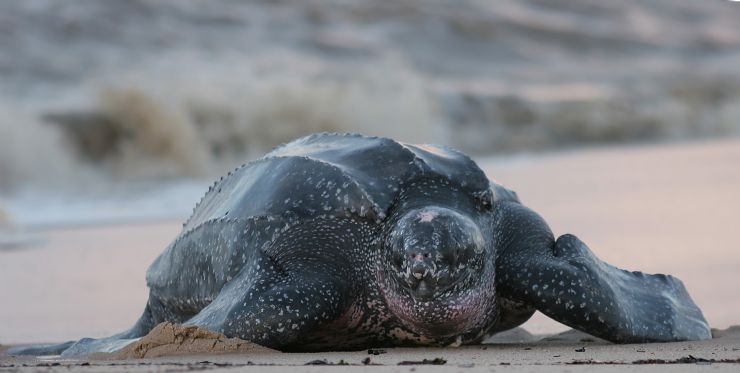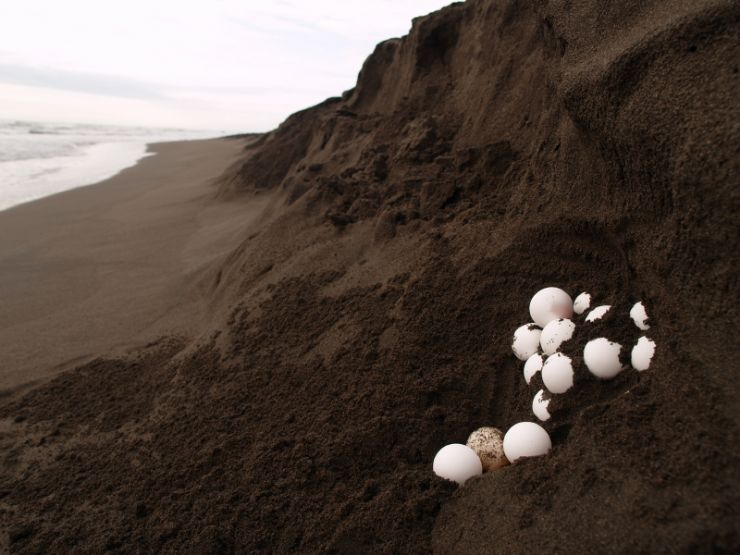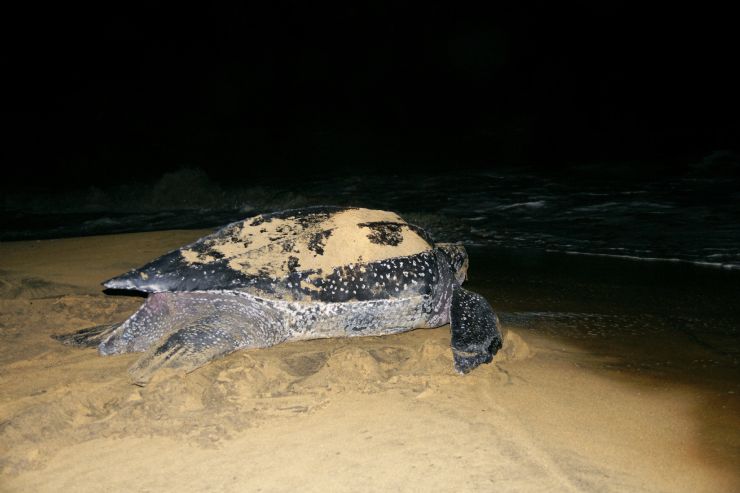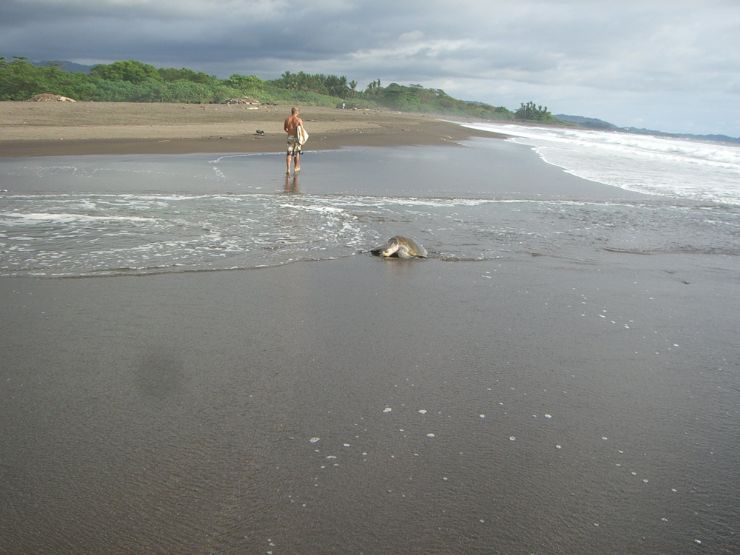One of my favorite things to do during nesting season is to head to the beach and look for mother and baby turtles. If you aren’t familiar with this phenomenon, you are surely missing out! During nesting season, female turtles emerge from the water and dig deep holes in the sand to lay their eggs. They can lay over 100 eggs in one nesting! They bury the eggs and then head back into the water. Around 2 months later, the baby turtles begin to hatch and dig themselves up to the surface of the sand. Once they emerge from the sand hole, they journey back across the beach and into the water. Watching mother turtles nest is a great adventure for anyone visiting Costa Rica during the season, and this is a family-friendly activity that is sure to please all ages! Check out this amazing graphic about Marine Turtles Life Cycle!
 Leatherback Turtle coming out of ocean
Leatherback Turtle coming out of oceanWhen to Go
The typical nesting season for sea turtles in Costa Rica extends through the winter months, into early spring, with the majority of sightings happening in December and January. You are most likely to spot a mother turtle beginning her nesting journey by the moonlight. You can check up on the moon cycle and ocean tides to give you some insight into when you might see the turtles coming to shore to nest their eggs.
What to Bring
Sea turtle nesting is an amazing experience, so the most important thing you want to bring is your attention span! You may have to wait several hours just to see one mother turtle, but it is worth it. You can bring a camera, but be sure not to use your flash. Since you’ll be out at night, be sure to bring a sweater, and wear closed-toe shoes and bug spray. A snack wouldn’t hurt either!
 Marine Turtle eggs on the beach at Tortuguero
Marine Turtle eggs on the beach at Tortuguero7 Days / 6 Nights
Starting at $779 per person
You will be required by law to be with an authorized tour guide if you want to visit known nesting sites. This is for the protection of the turtle population from poachers. You could face jail time if you try to sneak onto the beach, which is totally unnecessary. I don’t even try to sneak onto the beach during nesting season! The authorized guides are trained and take great pride in their job. If you’ll be viewing from a ranger station, they may have limited occupancy so you want to try to get your reservation early.
You should also know that if you are present during hatching season, you should not pick up baby turtles and help them into the water. Their journey from the beach to the water is important in their development, and they need to build those muscles so that they can survive in the water.
Where to Go
Tourists visit in droves to see nesting turtles each year, and two of the most popular places are Tortuguero National Park and Playa Grande in Guanacaste. Tortuguero, translated, means “Region of Turtles.” This area is on the northeastern Caribbean coast, and is a popular nesting spot, if not one of the most important for the green sea turtle. You may also see other species, like loggerheads and leatherbacks.
 Female Leatherback sea turtle returning to sea after laying her eggs
Female Leatherback sea turtle returning to sea after laying her eggsPlaya Grande, in the Guanacaste region, is another spot that is popular for nesting-sightings. The leatherback species are particularly visible here.
Another place to view nestings is in Playa Langosta, in the protected Marino Las Baulas National Park.

Sea Turtle & Surfer in Harmony

